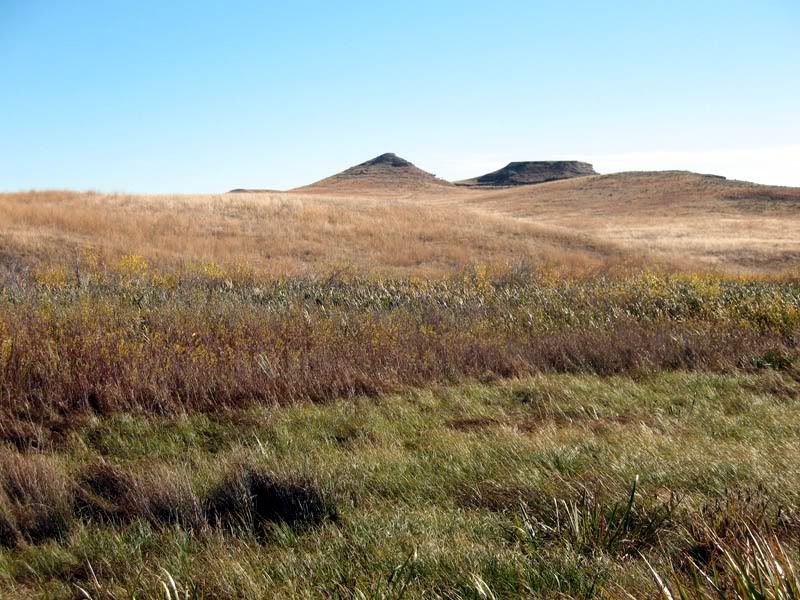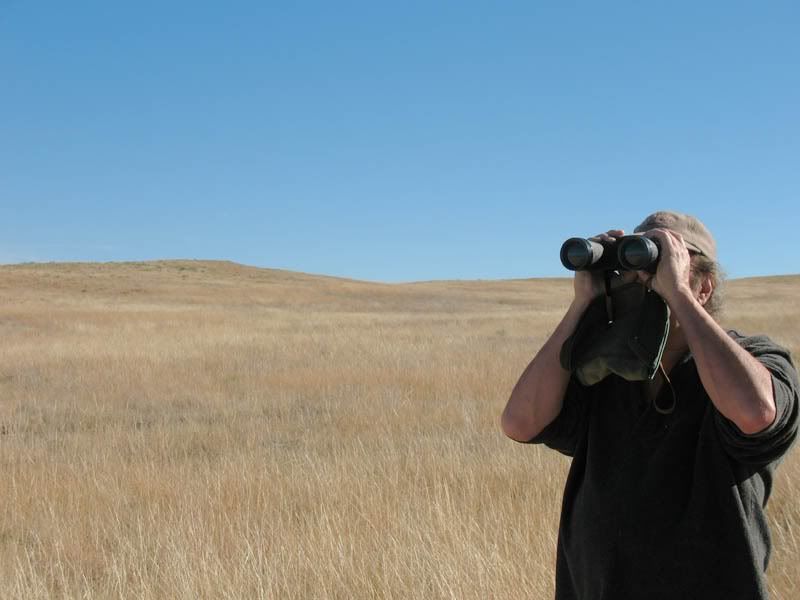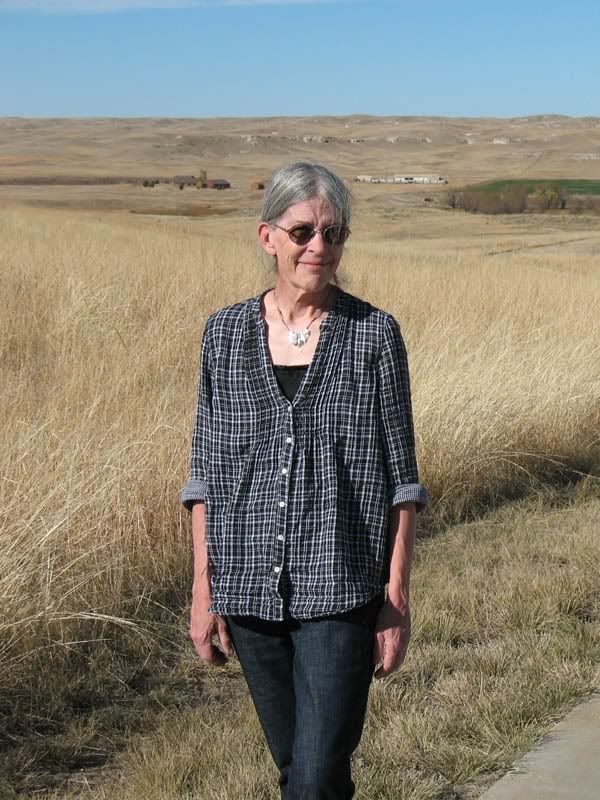We took a trip today to the Agate Fossil Bed National Monument in western NE, about a 500 mile round trip. It was our second visit, our first was almost a year ago.
Agate is in the middle of nowhere, literally. There's a nice visitor's center with displays and very informative movies about what the fossil beds are all about. There are some very nice hiking trails to the fossil beds, and out to an historic cabin where early paleontologists bunked, with incredibly beautiful scenery every step of the way. And, at least on the 2 days we've visited, there is incredible solitude and peace, both times we had the trails completely to ourselves. It seemed as if we were walking along on a different planet...
Outside, on the hiking trail:
The Neobrara River runs through the monument, and part of the trail to the fossil beds is made up of a walkway and bridge across the river and surrounding marshland.
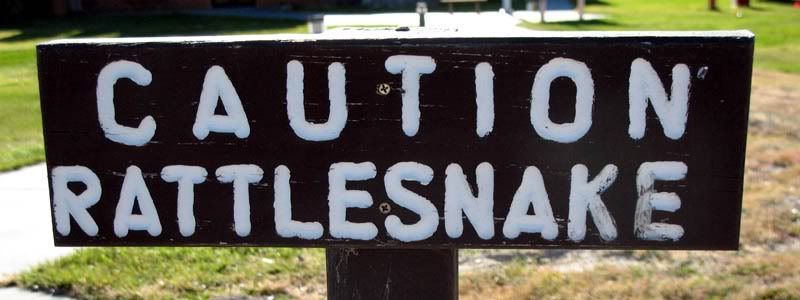
there were signs everywhere warning about the snake dangers. We kept a sharp eye out for them, but didn't see anything larger than a bug on our hike.
Inside, in the Visitor's Center: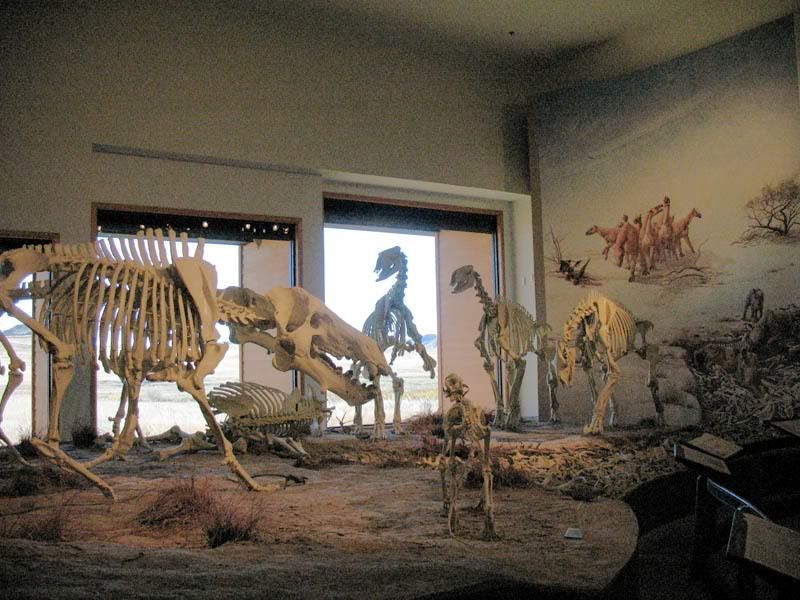
displays of the skeletons of animals whose bones were found in the fossil beds. These animals were early mammals (not dinosaurs) and many were carnivores, and few of their fossils have been found elsewhere.
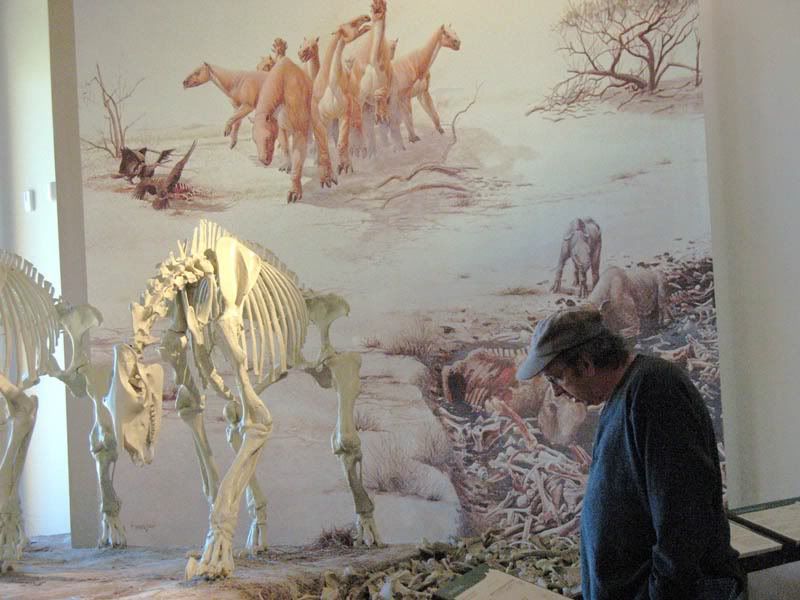
The bones collected and fossilized at Agate because it was one of the last wet spots as a giant sea that covered the area dried up, leaving the animals to eventually perish. The displays feature artists' depiction of those grisly times.

It is evident from the skeletons that some of these creatures were pretty fierce
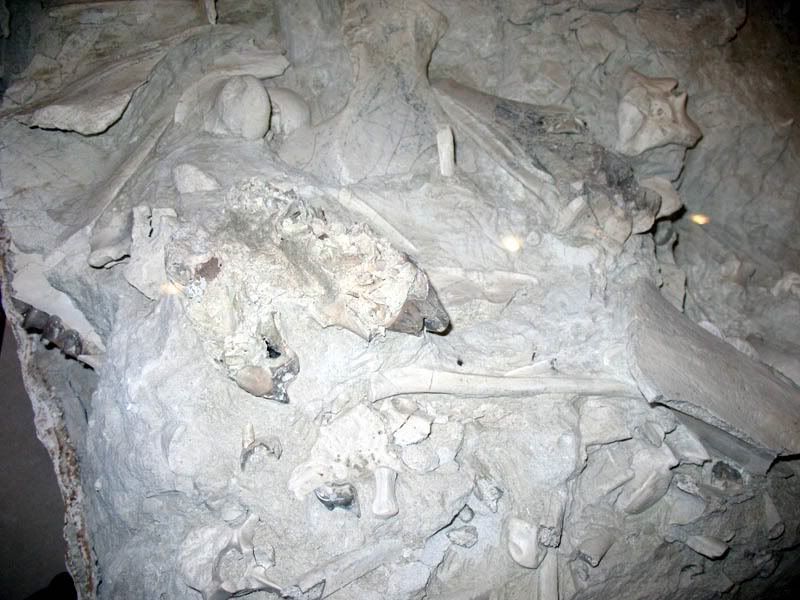
this is an actual chunk excavated from the fossil bed, showing the mishmash of bones the paleontologists were faced with. The chunk was wrapped in plaster soaked fabric for transport.
In addition to its important role in preserving the fossil beds, Agate National Monument is also the home of the James Cook collection, which include some amazing pieces of Native American art and articles of historical significance. The Monument is located on part of James Cook's original ranch, and he was a very important pioneer in the area and one of few good and trustworthy friends of the local tribes. That relationship resulted in many gifts to Cook showcasing some incredibly beautiful workmanship, and the well-preserved items on display are truly gorgeous. Sadly, some of the collection is made up of culturally and historically significant items given to Cook in the hope he could preserve them for future generations, as conditions for all the tribes deteriorated and they were forced onto reservations. At least the items we saw today did survive to the present, but so sad to think of the circumstances.
The Cook Collection was closed for renovation on our last visit, so this was our first chance to see it. The display area is very well done and conducive to photography, and we really enjoyed the presentation.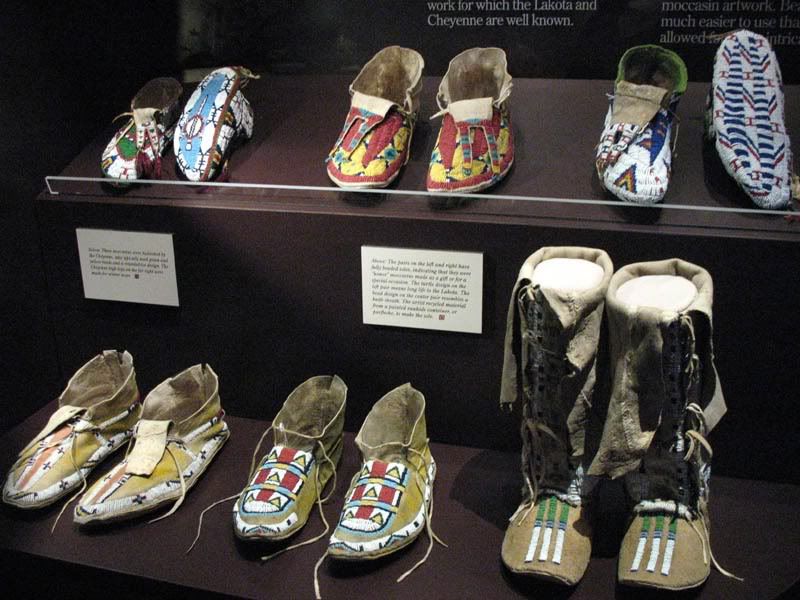
exquisite quill work (using porcupine quills) decorate these moccasins. The ones with decorated soles were made for ceremonial purposes
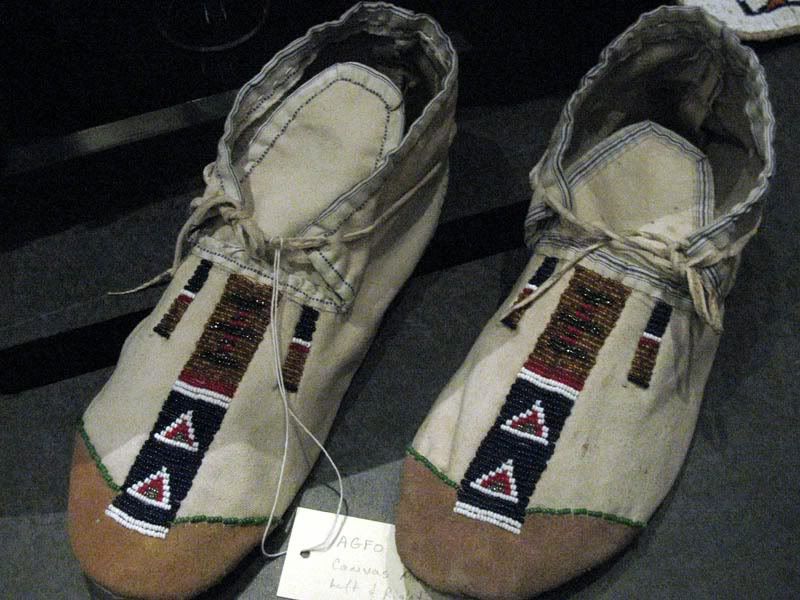
moccasins with glass bead decoration
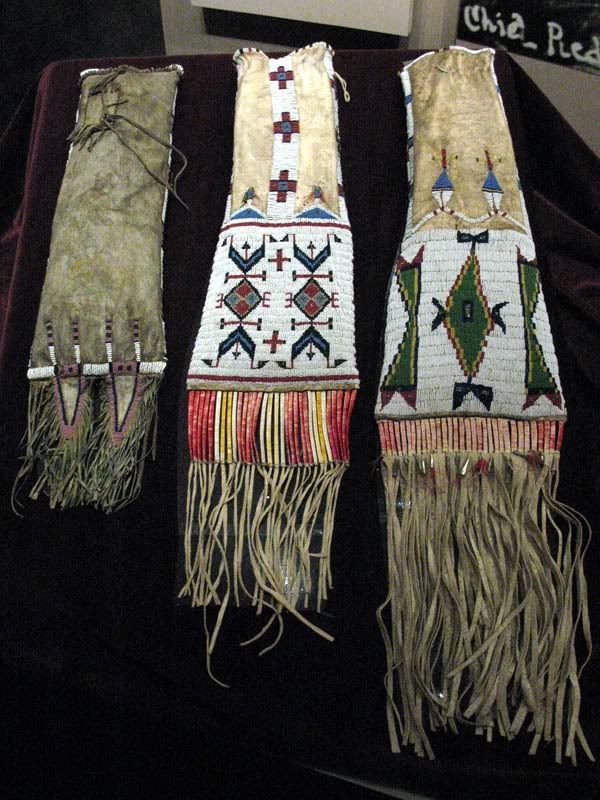
these quill work-decorated bags are for holding pipes

more beautiful quill work designs

